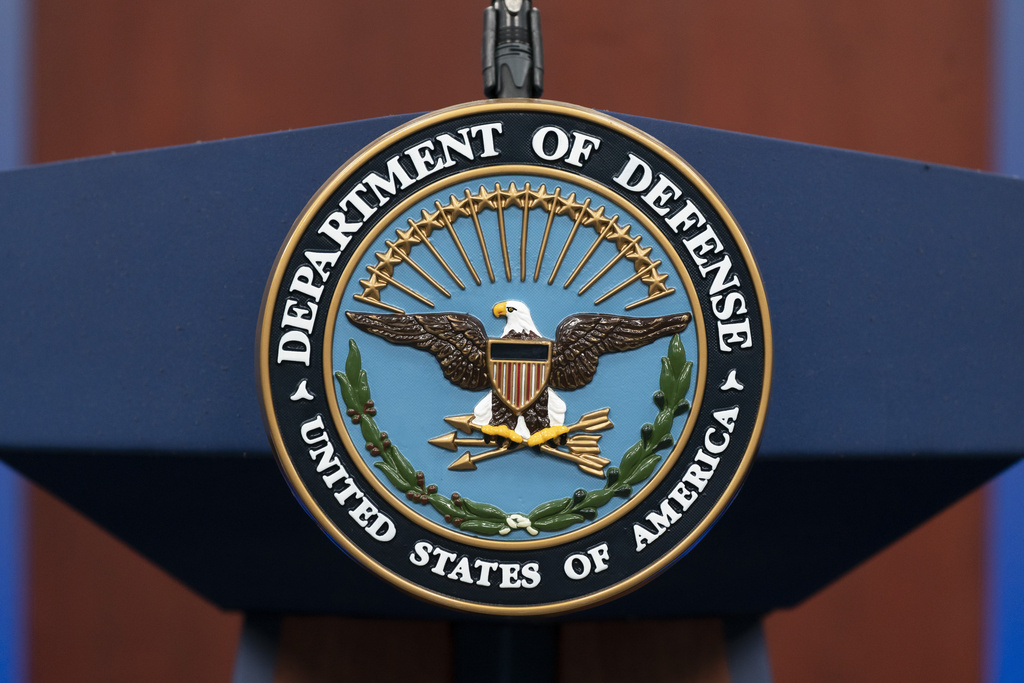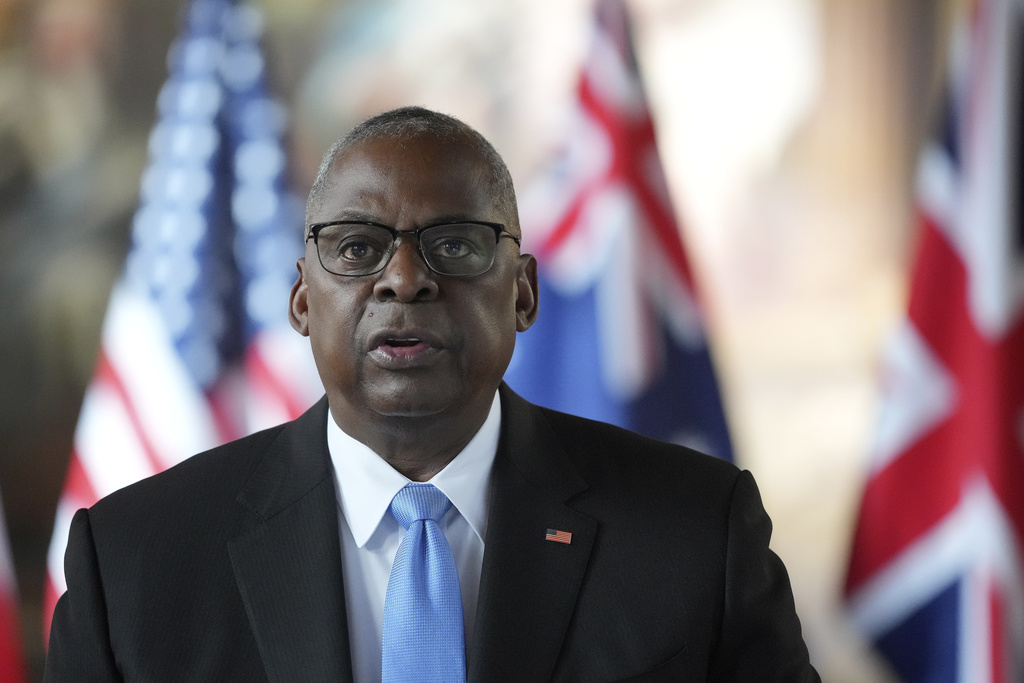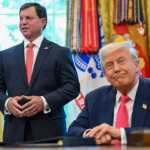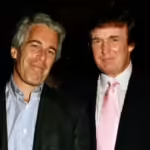U.S. Deploys Thousands of Troops to Middle East Amid Conflict \ Newslooks \ Washington DC \ Mary Sidiqi \ Evening Edition \ The U.S. is sending several thousand troops to the Middle East to bolster regional security and defend Israel if needed, raising the total U.S. military presence in the area to approximately 43,000 troops. The deployment comes amid heightened tensions between Israel and Hezbollah, including limited Israeli incursions into Lebanon. The Pentagon also announced the extension of the USS Abraham Lincoln in the region, with a second carrier, the USS Harry S. Truman, enroute.

U.S. Troop Deployment to the Middle East Quick Looks
- Troop Surge to Support Israel: The U.S. sends several thousand additional troops to the Middle East, reinforcing security amid growing tensions.
- Total U.S. Forces: The troop surge brings the number of U.S. personnel in the region to about 43,000.
- Strengthened Air Presence: Squadrons of F-15E, F-16, F-22 fighter jets, and A-10 attack aircraft will double the available airpower.
- Naval Forces on Extended Deployment: The USS Abraham Lincoln carrier strike group remains in the region, while USS Harry S. Truman is enroute to the Mediterranean.
- Biden’s Call for De-Escalation: President Biden urges a cease-fire amid reports of an imminent Israeli ground incursion into Lebanon.
Deep Look
In a significant military escalation, the United States is deploying several thousand additional troops to the Middle East to bolster regional security and to defend Israel amid growing tensions between Israel and Hezbollah. The Pentagon’s decision, announced Monday, comes as the U.S. seeks to support its ally Israel, which has already launched limited raids across the border into Lebanon, targeting Hezbollah positions. The additional deployment will raise the number of U.S. troops in the region to as many as 43,000.
Pentagon spokeswoman Sabrina Singh provided an overview of the increased U.S. military presence. According to Singh, the deployment will involve multiple squadrons of fighter jets and attack aircraft, including F-15E, F-16, and F-22 fighters, as well as A-10 attack planes. The deployment includes essential personnel needed to support the aircraft and bolster air capabilities, significantly enhancing the ability to respond quickly to any escalation in the conflict. Initially, the new squadrons were scheduled to rotate in and replace the ones already in the region. However, the Pentagon’s latest move is to keep both the incoming and existing squadrons, effectively doubling the available airpower in the area.
An Increasing U.S. Military Presence
The troop deployment follows recent strikes by Israel in Lebanon, including the reported assassination of Hezbollah leader Hassan Nasrallah, an action that marks a significant escalation in the ongoing Middle Eastern conflict. The new U.S. forces are intended to act as a deterrent and to support Israeli defenses if the situation intensifies, signaling that the U.S. is ready to play an active role in the evolving confrontation.
Defense Secretary Lloyd Austin announced Sunday that the USS Abraham Lincoln carrier strike group, along with its air wing, would remain in the region temporarily, rather than return as initially scheduled. According to a senior U.S. official who spoke anonymously, this extension is expected to last for about a month. The carrier strike group will provide enhanced air and maritime capabilities and serve as a warning to Hezbollah and other regional actors who may consider escalating the conflict.
In addition to extending the deployment of the USS Abraham Lincoln, the Pentagon confirmed that a second carrier, the USS Harry S. Truman, had departed from Virginia and was heading toward Europe. After its initial assignment in the Mediterranean, the Truman will join the Abraham Lincoln to maintain a two-carrier presence in the broader region, which provides additional leverage and military coverage. The USS Harry S. Truman is expected to arrive in the region within the next week, and its arrival will significantly strengthen U.S. deterrence against potential threats from Hezbollah or other hostile entities.
Israeli Raids and President Biden’s Response
The decision to boost the U.S. military presence follows Israel’s announcement that it has launched limited ground raids into Lebanon to dismantle Hezbollah infrastructure. This is the first major escalation of ground operations in Lebanon since the 2006 conflict between Israel and Hezbollah. These limited incursions reflect growing tensions between Israel and Hezbollah, as both sides have engaged in near-daily exchanges of fire since hostilities reignited.
At the White House on Monday, President Joe Biden addressed concerns about the escalating situation. Biden confirmed that he was fully briefed on Israel’s plans for a potential limited ground operation in Lebanon. “I’m more aware than you might know,” Biden said, indicating his awareness of Israel’s ongoing military strategy. He also expressed his support for an immediate cease-fire, saying, “I’m comfortable with them stopping. We should have a cease-fire now.” Biden’s comments highlight the administration’s concerns about further escalation and its preference for diplomatic efforts to de-escalate the situation.
Tensions Mount Amid Uncertainty
The deployment of additional U.S. troops and military assets is seen as a move to ensure that U.S. interests in the region are protected, as well as to provide reassurance to allies like Israel, who are facing growing threats from Hezbollah. Hezbollah, which has long been backed by Iran, has significantly escalated its attacks on northern Israel since the conflict in Gaza reignited. Israeli strikes have also targeted Hezbollah positions, including recent raids that reportedly killed Hassan Nasrallah and other senior leaders of the militant group.
Hezbollah’s retaliation has involved frequent rocket and missile launches into Israeli territory, yet much of their arsenal has been intercepted or has landed in uninhabited areas. Hezbollah, however, has faced significant setbacks, with several top leaders killed and their operational capabilities reportedly diminished. The ongoing Israeli air campaign has struck thousands of targets across Lebanon, leaving much of Hezbollah’s infrastructure in ruins.
Despite these losses, Hezbollah has vowed to continue its resistance. Naim Kassem, who has stepped in as the acting leader following Nasrallah’s death, stated in a televised address that the group remains prepared for further escalation. Kassem affirmed that Hezbollah’s ranks have already replaced their fallen commanders and that their fighters are ready to face an Israeli ground offensive if it materializes.
The Role of Air and Naval Power
The U.S. military build-up involves not only ground troops but also a significant increase in air and naval power, aimed at projecting strength and providing a rapid response capability. The deployment of F-15E, F-16, F-22, and A-10 aircraft to the Middle East greatly enhances the U.S.’s ability to conduct both defensive and offensive operations. F-22 Raptors, known for their advanced stealth capabilities and air superiority, will be critical in countering aerial threats, while A-10 attack aircraft are well suited for ground support missions.
Additionally, the extended deployment of the USS Abraham Lincoln and the impending arrival of the USS Harry S. Truman represent a substantial commitment to ensuring regional stability. The dual-carrier presence is a rare occurrence, underscoring the U.S.’s resolve to provide a robust military deterrent against potential escalation. These carrier groups, equipped with fighter jets and armed with sophisticated missile systems, will play a crucial role in securing maritime routes, conducting air operations, and offering tactical support to ground forces if required.
Diplomatic Reactions and International Concerns
The recent escalation in military activity has prompted diplomatic responses from U.S. allies and international organizations. The United Nations and the European Union have called for restraint from both sides, urging Israel and Hezbollah to cease hostilities and return to diplomatic negotiations. The U.S. has maintained that the deployment is a defensive measure, aimed at safeguarding Israel and preventing further destabilization of the region.
France, which has deep historical ties to Lebanon, joined the United States in calling for a cease-fire. French Foreign Minister Jean-Noël Barrot visited Beirut on Monday, urging both sides to de-escalate and refrain from further actions that could widen the conflict. Barrot specifically called on Hezbollah to stop firing rockets into Israel, emphasizing that Hezbollah “bears heavy responsibility in the current situation, given its choice to enter the conflict.”
Lebanon’s Prime Minister Najib Mikati, speaking after his meeting with Barrot, expressed Lebanon’s desire for an immediate cease-fire. He proposed deploying Lebanese troops in southern Lebanon in accordance with a U.N. Security Council resolution that was intended to bring stability to the region after the 2006 war. However, that resolution was never fully implemented, and the current situation remains extremely volatile.
U.S. Interests and Regional Implications
The U.S. troop build-up and increased naval presence reflect broader strategic goals beyond just supporting Israel. The Middle East remains a crucial region for U.S. geopolitical interests, including maintaining the free flow of oil, combating terrorism, and ensuring the security of regional allies. The additional deployments are intended to reassure U.S. partners while deterring Iranian influence, which is seen as a key driver behind Hezbollah’s aggressive actions.
The decision to extend the deployment of carrier strike groups and double the airpower available in the region signals a clear warning to Tehran and its proxies. By positioning significant military assets in such a critical area, the U.S. aims to send a message that it is prepared to respond forcefully to any threats to regional stability. The deployments serve as a deterrent against further escalation and aim to prevent Iran from capitalizing on the current unrest to advance its influence.
The arrival of the USS Harry S. Truman will provide additional firepower and flexibility in dealing with any sudden changes in the situation, ensuring that U.S. forces can respond effectively whether by air, sea, or land. The Truman’s presence will enhance the overall readiness of U.S. military forces in the region, and its air wing will offer substantial support capabilities for operations.
Conclusion: A Volatile Situation with Global Stakes
As tensions between Israel and Hezbollah continue to escalate, the United States has significantly increased its military presence in the Middle East. This deployment is aimed at reinforcing regional security and providing direct support to Israel if needed. The Pentagon’s decision to send additional troops, maintain dual aircraft carrier strike groups, and increase air capabilities highlights the seriousness of the current situation and the potential for further conflict.
President Biden’s call for an immediate cease-fire underscores the U.S.’s preference for a diplomatic solution, but the reality on the ground indicates that further hostilities may be difficult to avoid. The U.S.’s strategic buildup serves as a deterrent, but it also indicates readiness for active involvement if the conflict expands. The coming weeks are likely to be critical in determining whether diplomacy can prevail or if a broader confrontation becomes inevitable.
U.S. Deploys U.S. Deploys U.S. Deploys U.S. Deploys U.S. Deploys U.S. Deploys U.S. Deploys







